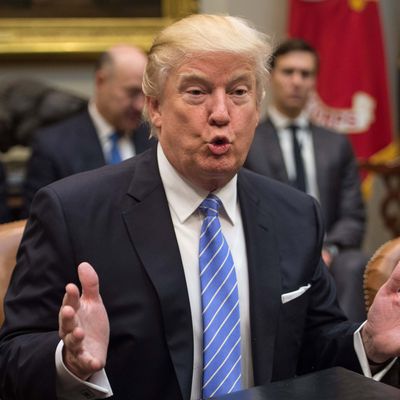
President Donald Trump signed an executive order Monday withdrawing the U.S. from the Trans-Pacific Partnership. “Great thing for the American worker, what we just did,” Trump said as he showed the document to reporters’ cameras.
During the campaign, Trump regularly railed against the TPP, which he called a “disaster.” The 12-country pact, which would have been one of President Obama’s major second-term achievements, called for the unification of the U.S. and 11 Pacific Rim nations in the world’s largest free-trade agreement. Proponents, including Obama, argued it would have strengthened the economies of the partner nations while checking the growing economic strength of China.
But it would also have resulted in too many American jobs leaving the country, Trump said. In June, Trump said the TPP is “another disaster done and pushed by special interests who want to rape our country — just a continuing rape of our country. It’s a harsh word, but it’s true.”
Trump, on Monday, will also reportedly begin the process of potentially ending NAFTA. He is planning to meet soon with Mexican president Enrique Peña Nieto and Canadian prime minister Justin Trudeau. “We will be starting negotiations having to do with NAFTA,” he said Sunday.
The new White House website provides some insight into those negotiations and what Trump will do if they don’t go how he hopes. “If our partners refuse a renegotiation that gives American workers a fair deal, then the President will give notice of the United States’ intent to withdraw from NAFTA,” it says.
In addition to the executive order regarding the TPP, Trump took action to freeze hiring of non-military federal workers and to ban U.S. government funding to NGOs that promote abortion.





























